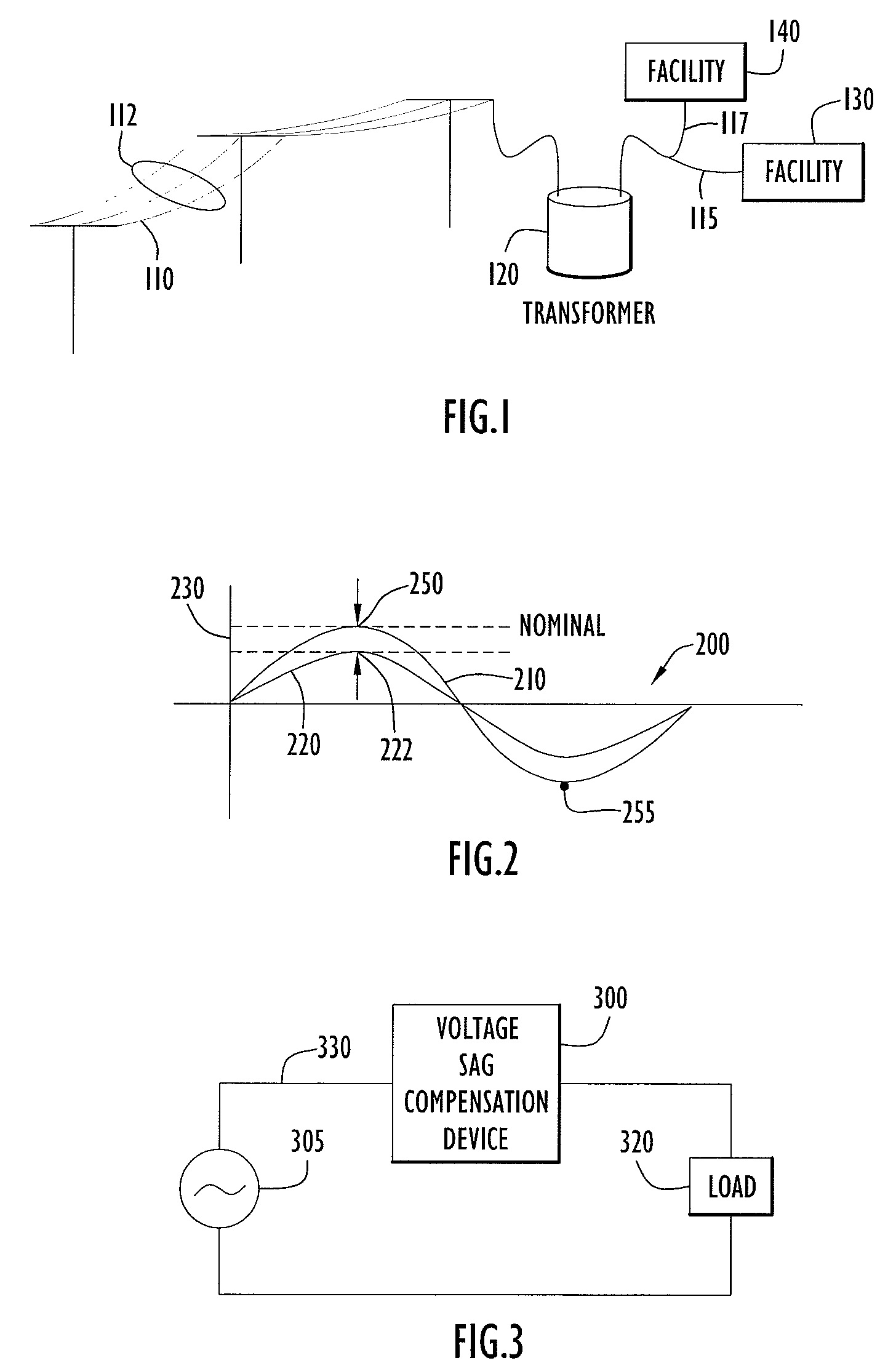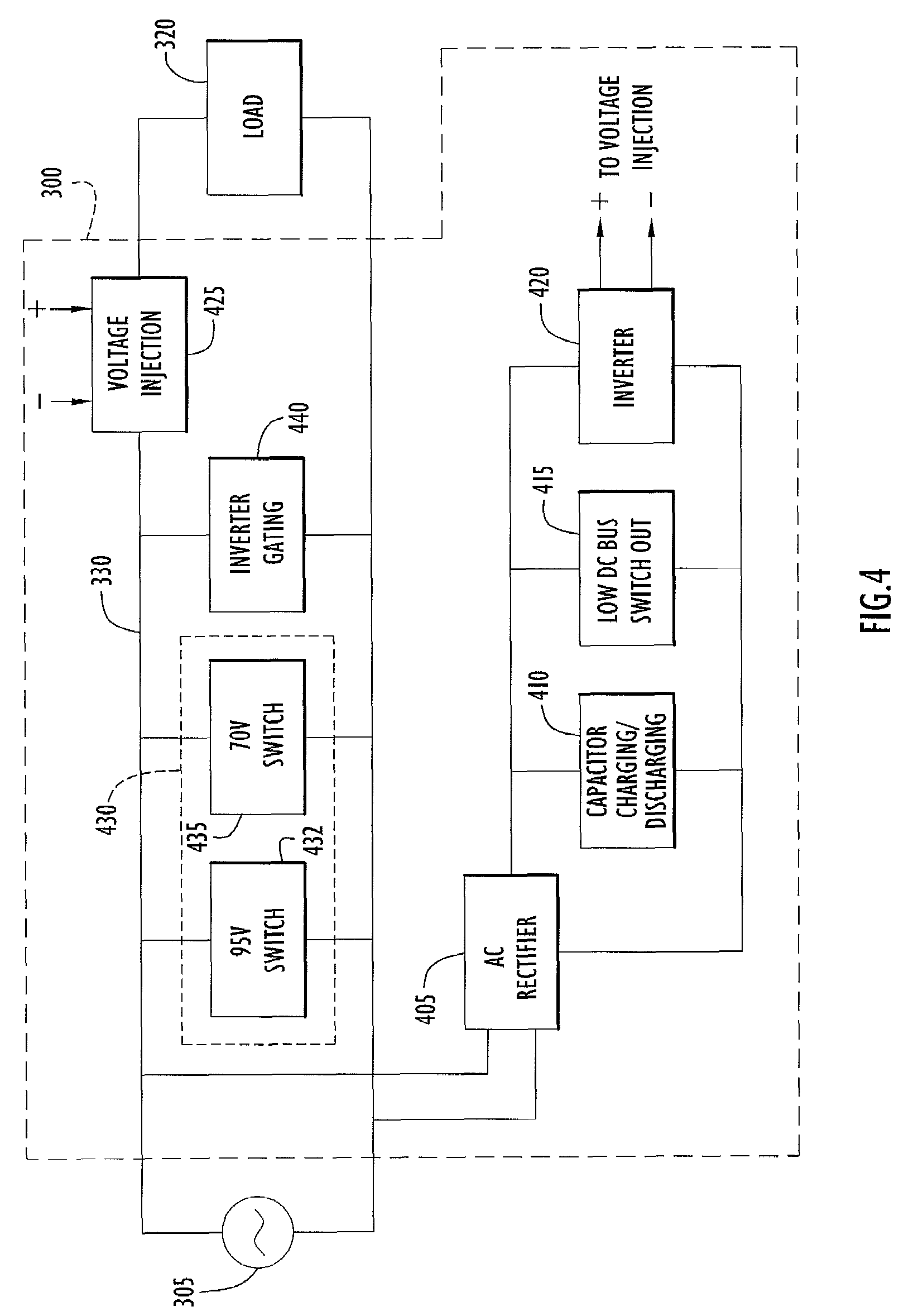Systems and methods for voltage SAG compensation
a voltage sag and compensation technology, applied in the field of electric power systems, can solve problems such as voltage sag and significant voltage drop, and achieve the effects of reducing the risk of voltage drop, faults or short circuits
- Summary
- Abstract
- Description
- Claims
- Application Information
AI Technical Summary
Benefits of technology
Problems solved by technology
Method used
Image
Examples
Embodiment Construction
[0033]FIG. 1 is a schematic diagram of a basic power system 100 in which the present invention may be utilized. As shown, a utility power line 110, or a collection of power lines 112 for 3-phase power, is strung near a facility 130. A stepdown transformer 120 may be connected between the power line 110 and power line 115 that services facility 130 such that facility 130 is provided electrical power at an appropriate voltage level, e.g. 120V. Facility 130 may include electric machinery, relays, heaters, and control systems that receive power via power line 115. At the same time, another facility 140 (perhaps with similar types of electrical loads) may also be receiving electrical power from power line 110 via power line 117. Due to the periodic switching in and out of selected loads at either or both facilities 130, 140, as well as possible faulty wiring, unexpected short circuits, and the like, there may be instantaneous changes in the amount of electrical current that is drawn from...
PUM
 Login to View More
Login to View More Abstract
Description
Claims
Application Information
 Login to View More
Login to View More - R&D
- Intellectual Property
- Life Sciences
- Materials
- Tech Scout
- Unparalleled Data Quality
- Higher Quality Content
- 60% Fewer Hallucinations
Browse by: Latest US Patents, China's latest patents, Technical Efficacy Thesaurus, Application Domain, Technology Topic, Popular Technical Reports.
© 2025 PatSnap. All rights reserved.Legal|Privacy policy|Modern Slavery Act Transparency Statement|Sitemap|About US| Contact US: help@patsnap.com



